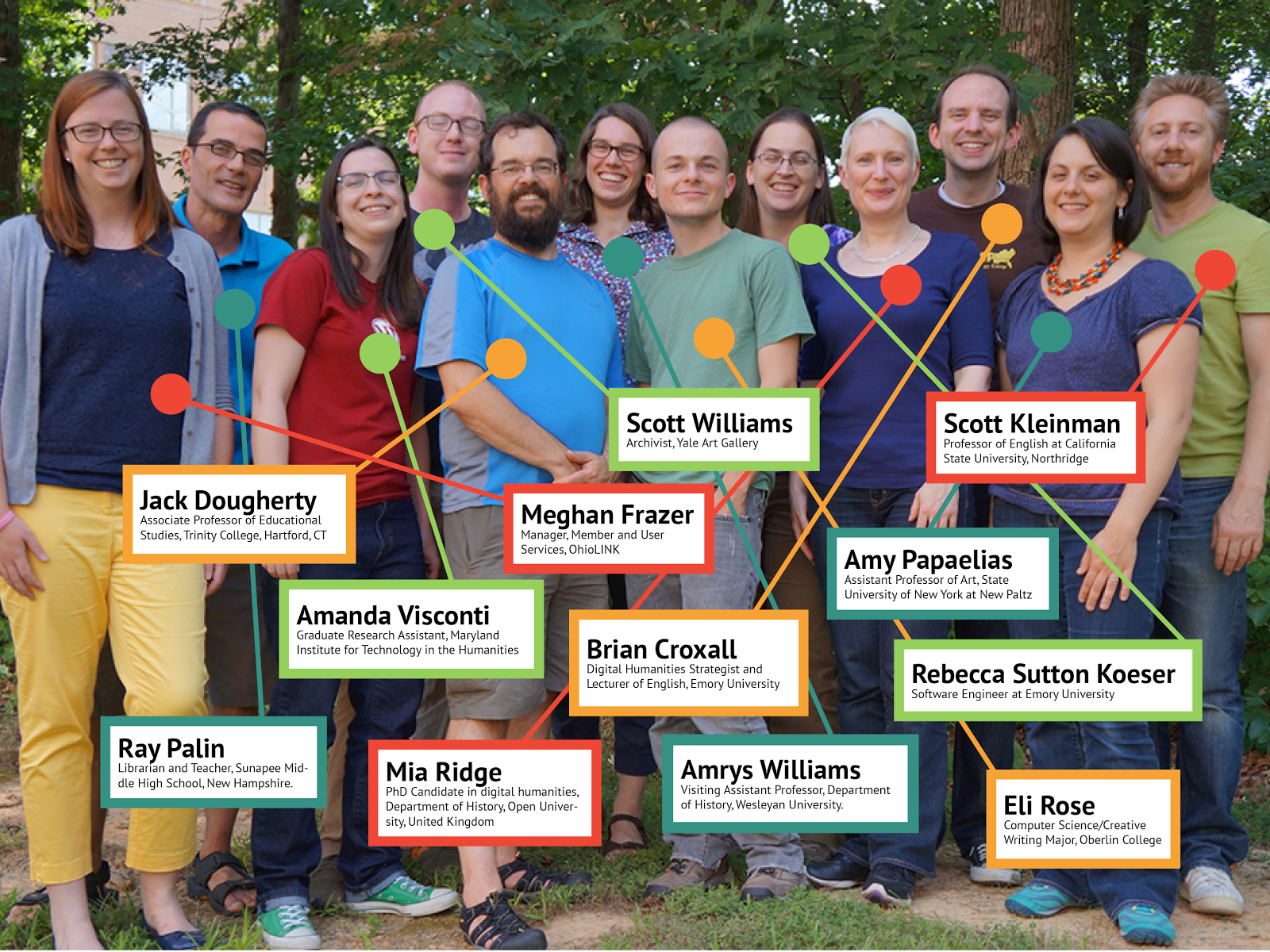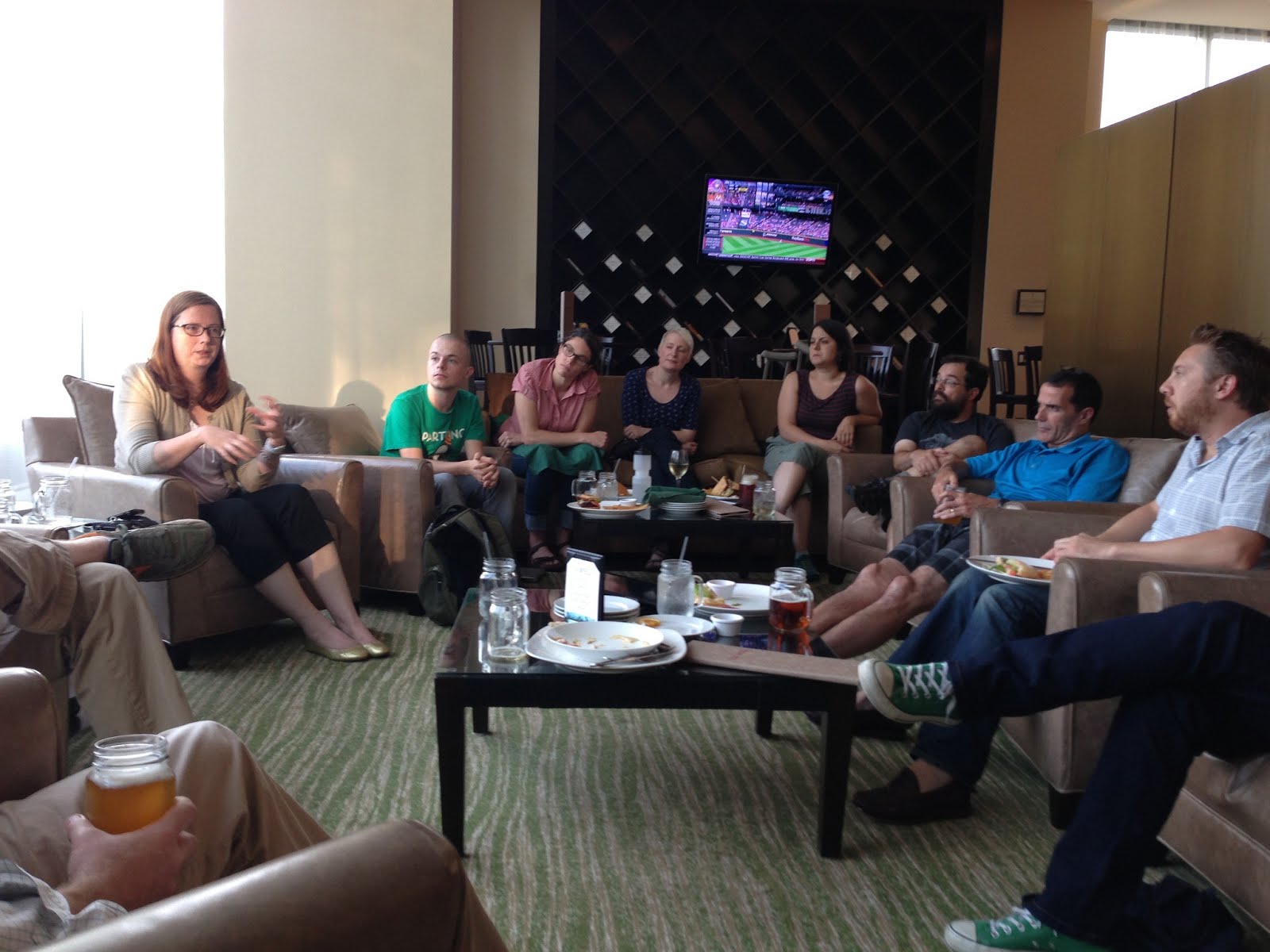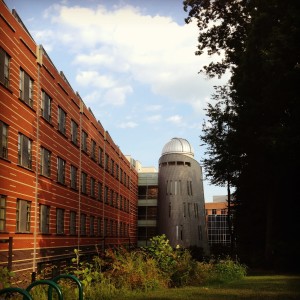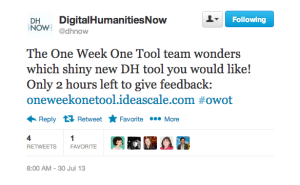I’m at the DH 2014 conference in Lausanne, Switzerland, and enjoying it immensely, despite cold and rainy weather which should be impossible in July. I’ve just delivered my paper “Play as Process and Product: On Making Serendip-o-matic” (abstract here), along with colleagues Mia Ridge and Brian Croxall (co-author Amy Papaelias couldn’t make it but contributed remotely). Iʼll blog more on the conference itself in a separate post, but for now I thought Iʼd put my portion of the presentation online. Hereʼs Miaʼs portion, and here Brian’s portion.
Play as Process and Product: On Making Serendip-o-matic
Hi, Iʼm Scott Kleinman, and my job is to introduce you to the One Week | One Tool experience which led to the creation of Serendip-o-matic. One Week | One Tool was a summer institute sponsored by the National Endowment for the Humanities. It was organised by Tom Scheinfeldt and Patrick Murray-John, and hosted by the Roy Rosenzweig Center for History and New Media at George Mason University. The idea for One Week | One Tool was inspired by models of rapid community development and advertised as a digital “barn-raising”, in which a diverse group of twelve DH practitioners would gather “to produce something useful for humanities work and to help balance learning and doing in digital humanities training.” The entire process from conception to release was to occur in six days. Last year, our group gathered for that brief period and brought into the world Serendip-o-matic.
Briefly, Serendip-o-matic searches large public image databases for objects containing user-submitted keywords in their metadata. Well, maybe that means something to this audience, but most people would be snoring by halfway through the sentence if not for the funky name “Serendip-o-matic”. The striking feature of this tool is that it is fun; from the name to the workflow, Serendip-o-matic avoids the dry academic approach in favour of an intuitive, playful user experience that requires no previous understanding of APIs or other technical details.
As Iʼm talking, Mia will give you a quick demonstration using a text based on the conference keynote abstracts. The thinking behind Serendip-o-matic is that it would replicate the serendipitous discoveries we used to make when wandering through a library archive and finding an unexpected treasure sitting on the shelf next to the book we were looking for. Serendip-o-matic aims to re-capture this experience in a digital context.
Although play was not part of its original conception, One Week | One Tool was almost by nature organised in a game-like framework since it suspended typical rules of scholarly activity and forced a group of mostly strangers to determine their activities in a rather ad hoc manner, rather like a THATCamp. But, unlike a THATCamp, we were tasked with building something from start to finish. Although we came from many different disciplines, we had to suspend many of our disciplinary inclinations and instead play whatever roles fell to us in the game. Propelled along by a fixed timeline and the need for a deliverable, we had minimal time for reflection or critical activity.
Nevertheless, our awareness of the artificial scenario in which we were placed increased as the week progressed, emerging almost organically from the physical spaces we occupied, the language we used, and the frames of reference we applied when we did pause to reflect. When we first met each other, Tom Scheinfeldt asked us to name our “super-powers”.
For us, his terminology evoked the skills we might need to get the group through a heroic quest to produce a magical DH tool. We felt like participants in a Live Action role-playing game, each designated abilities and skills, and we began to conceive of Tom as a kind of Dungeon Master, who had created a world in which everyday life was suspended. Tom encouraged this by making it a purposeful design decision to keep us on campus for the first half of the week, much of which we spent holed up in a tower, emerging only periodically to worship before the altar of the Centerʼs well-stocked Keurig machine.
With the clock ticking, we felt the pressure of a challenge mode in a game. This was play, but serious play in that it forced us to push ourselves.
As the week progressed, another metaphor began to take hold. The artificial ways in which we were forced to interact made us feel like participants in a reality TV programme, and we embraced this metaphor further by using social media to involve the public in the process. We blogged and tweeted often with teasers, never revealing exactly what we were going to produce. We also planned a public launch to build the suspense and anticipation. More importantly, we solicited feedback from the larger DH “community of practice” on the types of tools we were considering.
As Scott Williams noted, it felt a bit like being in a fishtank, with people watching us and speculating about what we were doing. This raised the stakes considerably.
The results were unsettling for both the organisers and participants. Tom Scheinfeldt and Patrick Murray-John likened the development process to an out of body experience. Things just sort of happened, propelled along by the rather raw forces that had been set up by the world they had created. At the same time, we participants were acutely aware of our strange break from reality. For that one week, we were absolved from our duties at work, from the everyday rhythms of our lives; we focused only on the goal of coming up with an idea and making it work. This unsettling quality was probably created by a fundamental tension between our sense of having entered into Huizingaʼs “magic circle”, where the rules of play applied, and our sense that people in the outside world were keeping score. Our actions were defined by this “magic circle” but had repercussions outside it. That led to increasingly long working days in which we tended to become giddy with caffeine and the glare of our computer screens.
In this strangely stressful environment, we often vacillated between the kinds of pressures we tend to feel at work and the sense of che sarà sarà that we might adopt when playing a game. We quickly started to look for ways to make the process fun—so that that the pressure to produce did not make it feel like being at work—and gradually the desire to make the process playful led the manifestation of elements of play within the product itself. The machinery imagery in the design of Serendip-o-matic probably reflected the fact that we all felt like we were being put through the grinder, and the growing prominence of our sassy Hippo mascot helped keep things light.
Although we had not set out to do so going into One Week | One Tool, we began to produce in Serendip-o-matic a tool that was both playful and for play. So—now Iʼll turn the floor over to Mia, who will talk about how this played out (get the pun?) in the design of the tool.





